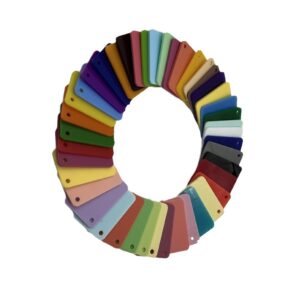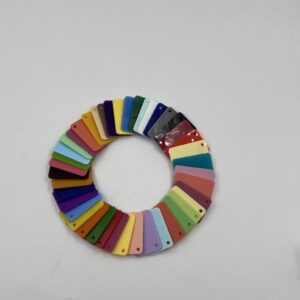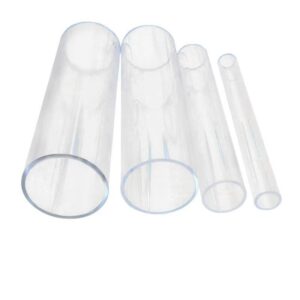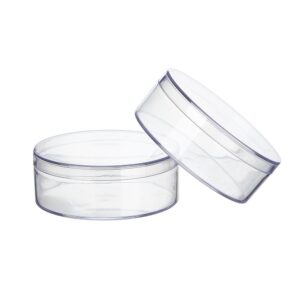Summary
Acrylic colors play a crucial role in the artistic process, enabling creators to produce vibrant and dynamic works. Acrylic paint, a fast-drying medium composed of pigment suspended in an acrylic polymer emulsion, is celebrated for its versatility and ease of use. Artists can manipulate acrylics to emulate various techniques associated with watercolors and oils, while also benefiting from the durability and water-resistance of the paint once it dries.. This adaptability makes acrylics a favored choice among both amateur and professional artists, fostering a diverse range of styles and applications in contemporary art.
Table of Contents
Choosing the right acrylic colors is paramount to achieving the desired visual impact in a piece. Important factors to consider include paint quality, color selection, viscosity, and environmental conditions, all of which significantly influence the final outcome of an artwork. Understanding color theory basics—such as primary, secondary, and complementary colors—helps artists create harmonious palettes that can evoke specific emotions or themes within their work. The significance of these choices is underscored by the contrasting characteristics of artist-grade and student-grade acrylics, which cater to different skill levels and artistic intentions.
Despite its accessibility, the selection of acrylic colors is not without controversy. Issues surrounding the use of lower-quality pigments in student-grade acrylics, which may fade over time, raise concerns for both artists and collectors regarding the longevity and integrity of artworks. Additionally, the rapid drying time of acrylics can be both a blessing and a challenge, as artists must balance their techniques and color mixing skills under time constraints. As a result, the knowledge and thoughtful consideration of color choices become vital elements in an artist’s toolkit for mastering acrylic painting.
In summary, mastering the art of choosing the perfect acrylic colors requires a blend of technical understanding and creative exploration. By considering factors such as paint quality, color interactions, and personal artistic goals, creators can harness the full potential of acrylics, leading to compelling and evocative artwork that resonates with viewers.
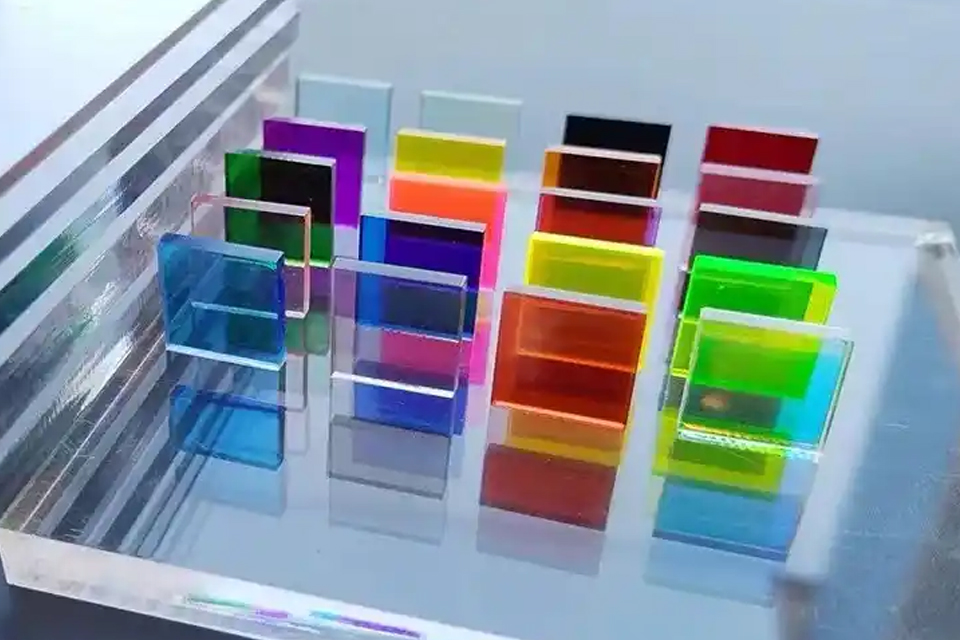
Understanding Acrylic Paint
Acrylic paint is a fast-drying medium made from pigment suspended in an acrylic polymer emulsion, often enhanced with plasticizers, silicone oils, defoamers, stabi- lizers, or metal soaps. Its water-based nature allows for easy manipulation and cleanup; however, once dry, it becomes water-resistant, making it a durable choice for artists. The versatility of acrylics permits them to mimic various painting techniques, including those of watercolors and oils, while also maintaining unique properties that distinguish them from other media.
Composition and Properties
The primary components of acrylic paint include water, pigment, and emulsion, but they may also contain additives like dispersants, buffers, preservatives, and thickeners to enhance performance and stability. Depending on the dilution with water or the addition of mediums, the finished product can exhibit a range of textures and finishes, from thin washes to thick impasto applications.
Varieties of Acrylic Paint
Acrylic paints are categorized into two main grades: artist quality and student qual- ity. Artist-grade acrylics contain higher pigment concentrations, resulting in more vibrant colors and better lightfastness. These paints are often preferred by profes- sional artists for their superior blending and layering capabilities. Conversely, student-grade acrylics are formulated with lower pigment levels and more fillers, making them a budget-friendly option for beginners while still providing adequate coverage.
Types of Acrylics
Different types of acrylic paints cater to various artistic needs. Heavy body acrylics are thicker and ideal for impasto techniques, as they hold brush or knife strokes well.
In contrast, fluid acrylics are thinner and better suited for detailed work or applications requiring smooth coverage. Additionally, specialty acrylics are available for unique applications such as fabric screen printing and linoblock printing, further expanding the medium’s utility in mixed media art.
Historical Context
Acrylic paint was developed in the 1940s, initially for industrial purposes, before gaining popularity in the fine arts during the 1950s due to its vibrant colors and rapid drying times. The introduction of high-quality formulations has allowed artists to explore the medium’s full potential, leading to its widespread use in contemporary art practices.
Color Theory Basics
Color theory is a fundamental aspect of creating artwork, especially when working with acrylic paints. It involves understanding how colors interact, mix, and the effects they produce in compositions. A color scheme refers to the selection of colors used in artwork based on the principles of color theory.
Primary, Secondary, and Tertiary Colors
The primary colors—red, blue, and yellow—are the foundation of color mixing and cannot be created by mixing other colors. Secondary colors are formed by mixing two primary colors: green (yellow and blue), orange (red and yellow), and purple (red and blue). When a secondary color is mixed with one of the primary colors it already contains, a tertiary color is created. Examples of tertiary colors include turquoise (blue and green), violet (purple and blue), and lime green (green and yellow) .
Complementary Colors
Complementary colors are pairs of colors that, when placed next to each other, enhance one another’s intensity and brightness. The complementary color of a primary color is derived from mixing the other two primary colors. For example, the complementary color of red is green, blue is orange, and yellow is purple. Similarly, the complementary color of a secondary color is the primary color not used in its creation, with green complementing red, orange complementing blue, and purple complementing yellow.
Warm and Cool Colors
Colors can also be categorized as warm or cool. Warm colors, such as red, orange, and yellow, evoke feelings of warmth and energy, while cool colors, including blue, green, and purple, convey a sense of calm and tranquility. Understanding the temperature of colors is essential for creating mood and depth in artwork.
Color Mixing Techniques
Mixing colors effectively requires knowledge of color properties and relationships. Opaque pigments are dense and ideal for solid subjects, while transparent pigments create lighter, airy effects, suitable for atmospheric representations. Artists can experiment with different proportions of primary colors to achieve various shades and tones. For instance, more red in a red-yellow mix will yield a stronger orange, while more yellow will create a lighter, yellower hue. By mastering these color theory basics, artists can enhance their acrylic painting skills and create more harmonious and visually appealing artworks.

Factors to Consider When Choosing Acrylic Colors
When selecting acrylic colors for a painting project, several important factors should be taken into account to achieve the desired effect and maintain harmony within the artwork.
Quality of Acrylic Paint
The quality of acrylic paint is a crucial consideration. Professional-grade acrylics are formulated to resist chemical reactions and have higher pigment concentrations, providing better color strength and permanence compared to student-grade acrylics, which have less pigment and more economical formulations. It is advisable to choose paints with high lightfastness ratings, as these pigments are less likely to fade over time when exposed to light.
Color Selection and Mixing
Choosing the right colors involves understanding the attributes of each paint, such as masstone and undertone. Colors should be selected not only for their individual qualities but also for how they interact with one another. It is important to keep in mind the concept of color theory, where colors can evoke emotions and convey different messages. For example, a red base may suggest passion, while soft greens can evoke feelings of peace.
Viscosity and Consistency
The viscosity of acrylic paint affects its application and the techniques that can be used. Heavy body acrylics offer a thick consistency ideal for impasto and retaining brushstrokes, while fluid acrylics are suitable for detail work and watercolor tech- niques. Artists may also choose to mix acrylic mediums to achieve a specific consistency that aligns with their painting goals.
Environmental Factors
The drying time of acrylics is another significant aspect to consider, especially in dry climates where paint can dry rapidly on the palette and canvas. To extend working time, artists can use slow-drying mediums or maintain a moist environment with a spray bottle.
Emotional and Aesthetic Considerations
When determining a base color, artists should consider the subject matter, desired mood, and overall color palette. A contrast between the base color and the main subject can enhance visual interest and energy in the painting. Additionally, a harmonious color scheme can be created by aligning the base color with the primary colors being used, either through similarity or contrast.
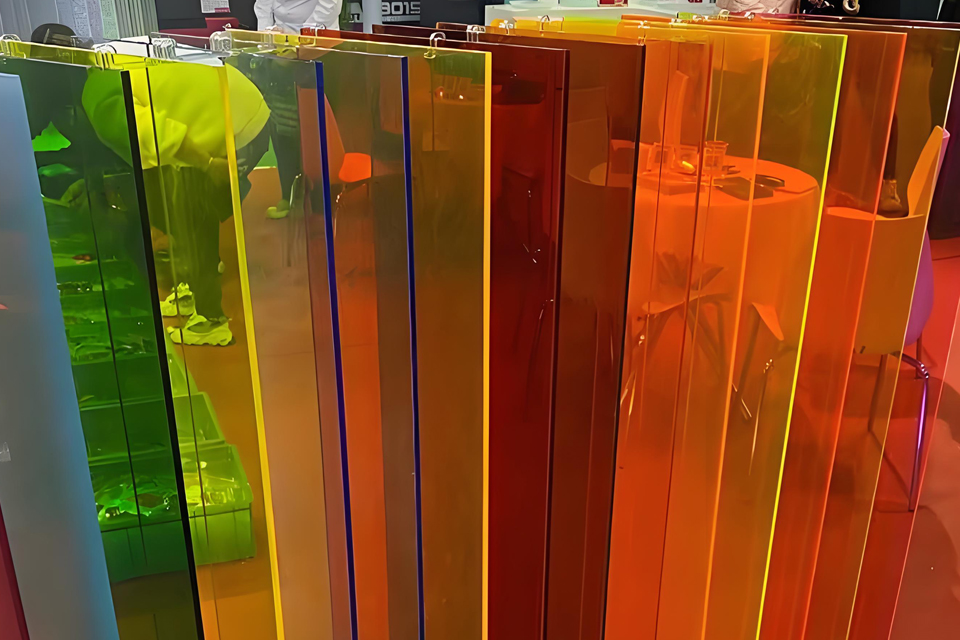
Popular Acrylic Color Palettes
Basic Color Palette Recommendations
When beginning to explore acrylic painting, a simple yet effective color palette can significantly enhance the artist’s ability to create. A commonly recommended basic acrylic palette includes two of each primary color: red, yellow, and blue, along with additional essential colors. Artists like L.S. Lowry advocate for a straightforward palette, which can consist of Ivory black, Vermilion, Prussian blue, Yellow ochre, Flake white, and no medium, emphasizing the importance of simplicity in materials.
Color Mixing Techniques
For effective color mixing, artists are encouraged to start with primary and secondary colors. Utilizing warms and cools of primary colors allows for a more versatile mixing experience. A beginner’s palette may typically include ultramarine blue and burnt sienna (or burnt umber), which can facilitate a wide range of color combinations and tones. Mixing colors on a palette is crucial to avoid muddying the colors on the canvas, and it’s advisable to test colors by creating swatches to understand how they change upon drying.
Advanced Color Choices
As artists become more experienced, they may wish to incorporate specialty colors such as metallics, fluorescents, and iridescents, which can add unique effects to their work. Brands like GOLDEN offer professional-grade acrylics with a variety of colors that enhance mixing capabilities, providing options that allow for greater dynamic and visually striking results. Additionally, understanding the qualities of color—hue, chroma, and value—enables artists to create more nuanced palettes, balancing vibrant and muted tones to achieve desired effects in their artwork.
Suggestions for Specific Projects
For specific projects, artists should consider the overall light in their scenes. For instance, a beach scene in bright sunlight may benefit from a pale yellow base, while a night scene might require deeper blue or purple tones. This approach ensures that the chosen palette not only enhances the visual appeal of the artwork but also reflects the intended atmosphere and emotion of the scene being depicted.
Techniques for Applying Acrylic Colors
Acrylic painting offers a wide variety of techniques for applying colors that can enhance the depth, vibrancy, and texture of artworks. Understanding and mastering these techniques is essential for both beginners and experienced artists.
Basic Techniques
The most fundamental acrylic techniques involve mixing colors on the palette and the canvas, creating gradients, and applying impasto. These methods serve as the foundation for more advanced applications and allow for an exploration of color interactions.
Layering and Glazing
Layering is a technique where artists start with large blocks of color, often applied as washes, and gradually refine their work by adding additional layers. This method enables artists to create depth and complexity within their paintings. Glazing, on the other hand, involves applying thin layers of paint mixed with a glazing medium, which enhances the transparency and luminosity of the colors used. This technique can be particularly useful for improving shading and adding subtle tones to areas that have already dried.
Texture Techniques
To modify the texture of acrylic paint, artists can use various texture mediums, such as modeling paste and liquid gel medium. Modeling paste allows for the creation of three-dimensional textures, while liquid gel medium can increase fluidity and transparency, enabling smoother brushstrokes and less visible paint application. These mediums can significantly alter the final appearance of the artwork, offering endless possibilities for creative expression.
Blending Techniques
Blending colors seamlessly can be challenging due to the quick-drying nature of acrylics. However, practicing blending can lead to better control over color transi- tions. Techniques such as wet-on-wet blending—where wet paint is applied on top of wet paint—can help achieve smoother transitions between colors. Additionally,
keeping two jars of water handy can aid in maintaining the purity of colors during the blending process by separating cleaning and thinning water.
Detailing and Finishing Touches
Detailing is typically reserved for the final stages of a painting, where precision is paramount. Artists use fine brushes to add intricate details, ensuring accuracy and attention to smaller elements of the composition. This step is crucial in bringing the painting to life and achieving a polished finish. By mastering these techniques and experimenting with different methods of ap- plication, artists can develop their unique style and enhance their acrylic painting skills. The versatility of acrylics makes them an ideal medium for a wide range of artistic expressions.
Tools and Resources
When starting your journey with acrylic painting, having the right tools can sig- nificantly enhance your experience and outcomes. Various tools are essential for creating textures, mixing colors, and executing techniques effectively.
Essential Tools for Acrylic Painting
One of the most versatile tools is the silicone scraper, particularly favored for its ability to create interesting textures and effects on canvas. This tool, which can be found in various forms, such as the popular flat white one (W-06), is bendable and allows artists to apply different pressure levels, resulting in a wide array of styles and textures. It works well for both small and large paintings, catering to artists of all skill levels from beginners to professionals. In addition to the silicone scraper, it is recommended to use synthetic brushes, as they hold up well to the thick consistency of acrylic paints. Using a palette knife can also introduce dynamic texture into your work. Experimenting with a range of brushes and tools will enable you to discover the effects that resonate with your artistic style.
Color Mixing Resources
Understanding how to mix colors is fundamental to achieving desired effects in acrylic painting. Creating a color mixing chart is an invaluable resource for artists, allowing them to visualize combinations and swatches of colors. This chart serves as a guide for mixing various hues and can save time when trying to replicate specific shades or tones. By documenting your mixtures, you can build a personalized reference that aids in maintaining consistency in your color palette. Additionally, it’s beneficial to familiarize yourself with the color wheel and its principles. This knowledge can help in understanding how to achieve particular colors through mixing and what combinations work best to create harmony in your artwork.
Inspirational and Practical Guides
For artists looking to expand their skills and find inspiration, various guides and tutorials are available. These resources often cover the basics of acrylic painting, from mastering brushstrokes to understanding color theory and composition[- 9]. Setting achievable goals and documenting your artistic process through video recordings can provide insights into your development as an artist and encourage continued growth. By leveraging the right tools and resources, artists can unlock the full potential of acrylic painting, exploring its endless possibilities and developing a cohesive style that reflects their unique vision.
Practical Exercises for Beginners
To effectively choose and mix acrylic colors, beginners can engage in a variety of practical exercises designed to enhance their understanding of color values and mixing techniques. These exercises not only serve as valuable warm-ups but also strengthen foundational skills necessary for painting.
Value Mixing Exercise
One effective exercise involves creating a value mixing chart. Begin by cutting a piece of white poster board or heavyweight paper into 5-inch squares. On each square, mark out a grid consisting of nine 1.5-inch squares. Using black and white acrylic paint, mix various shades of gray to fill the squares randomly. This activity helps artists develop their ability to read and mix values, ensuring they are better prepared for painting sessions.
Limited Palette Practice
Another beneficial practice is to work with a limited palette. Choose two or three colors and create compositions or sketches using only these hues. This exercise encourages familiarity with color relationships and helps in understanding how to create a broader range of shades and tones from a minimal selection. Beginners can also refer to a color mixing guide to facilitate this process, as it takes the guesswork out of selecting which colors to combine.
Experimentation with Blending
Beginners should not shy away from experimenting with blending colors. Using various brushes and applying different techniques can yield unique effects. It is crucial to practice not overloading the brush and to utilize a range of brush shapes and sizes for diverse results. Such experimentation can enhance the artist’s confidence and competence in color application.
Color Wheel Utilization
Utilizing a color wheel is another excellent way to grasp the fundamentals of color mixing. By understanding primary, secondary, and complementary colors, artists can effectively mix and tone down colors to create more nuanced palettes. This knowl- edge is essential for making informed choices when selecting colors for artwork. Additionally, creating small color charts by mixing combinations of colors helps to reinforce these concepts and develop practical skills. Engaging in these practical exercises allows beginners to cultivate their color mixing skills and gain a deeper appreciation for the acrylic painting medium, ultimately leading to more successful and satisfying artistic endeavors.
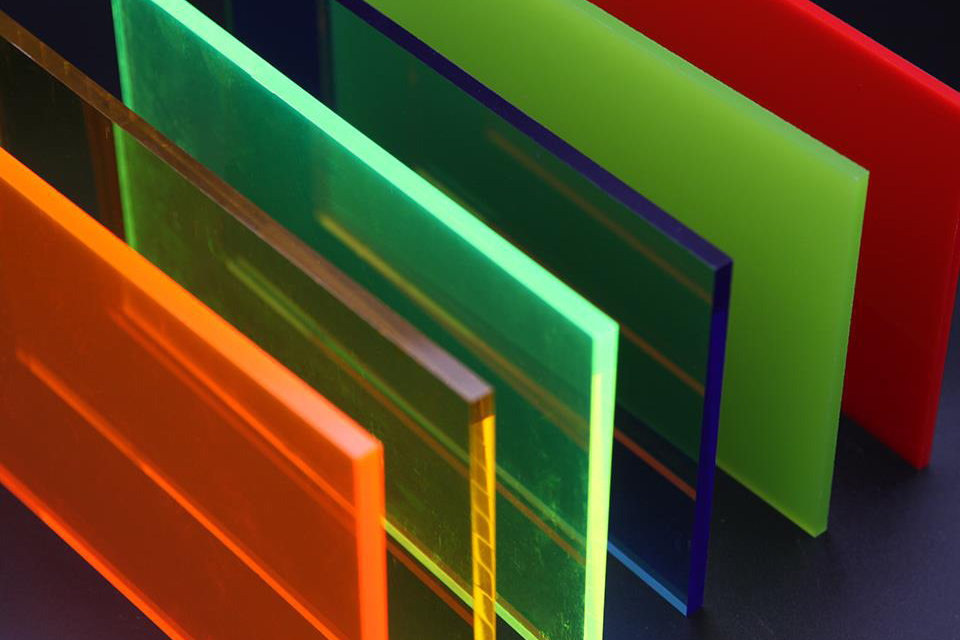
Tips for Experimenting with Acrylic Colors
Basic Techniques for Color Mixing
One of the most fundamental skills to master when working with acrylics is the ability to mix colors effectively. Start by squeezing small, pea-sized dots of your chosen colors on your palette or canvas, ensuring to vary the colors across the surface for interesting blending possibilities. Experiment with blending colors while keeping your brush movements light and circular to achieve a dynamic yet balanced mix without turning the entire painting into a single tone.
Understanding Color Bias
Color bias refers to the subtle undertones in pigments that can affect how colors mix and interact. For instance, Cadmium Red has an orange bias, whereas Alizarin Crimson leans towards blue. A balanced palette should incorporate colors with both warm and cool biases, allowing for depth and variety in your artwork. To mitigate the challenges of color bias, consider starting with a palette of six colors, two from each primary hue: red, yellow, and blue, ensuring a mix of both warm and cool options.
Working with a Limited Palette
A practical approach to refining your color mixing skills is to use a limited palette of two or three colors. This technique encourages creativity and forces you to discover unique combinations and shades. By limiting your color choices, you can better understand how to mix and manipulate colors without becoming overwhelmed by too many options.
The Importance of Testing and Swatching
As some acrylics can darken upon drying, it’s advisable to create swatches of your colors beforehand. By painting small squares on a scrap canvas and observing how they dry, you can better anticipate the final look of your chosen colors. This
practice not only helps in avoiding unwanted color shifts but also aids in refining your mixing techniques.
Embracing Experimentation
When working with acrylics, don’t hesitate to let your creativity take the lead. Embrace the process of trial and error, mixing various ratios of colors—such as 1:4, 1:2, and 2:1—to explore the results. This experimentation is integral to developing your personal style and understanding the capabilities of your chosen medium.
Incorporating Specialty Colors
Lastly, consider the inclusion of specialty colors like metallics, iridescents, or fluo- rescents within your acrylic palette. These unique hues can provide striking effects and highlights to your artwork, enhancing the overall visual impact. Evaluate how these colors align with your artistic vision and incorporate them where appropriate to elevate your creations.





